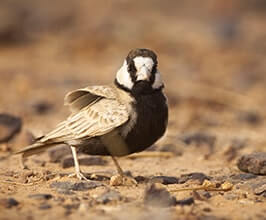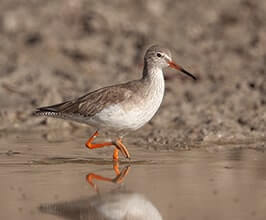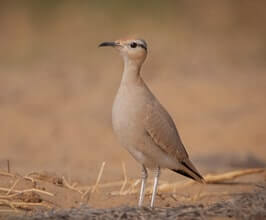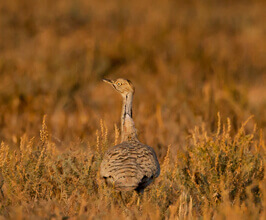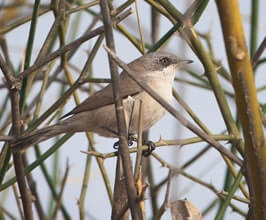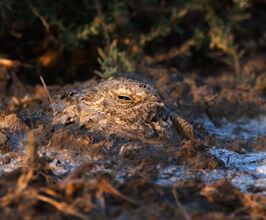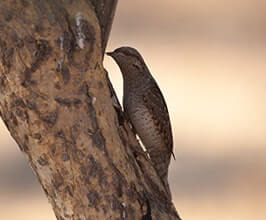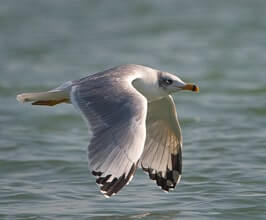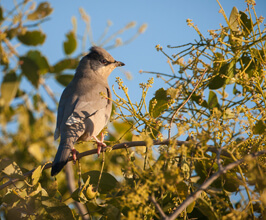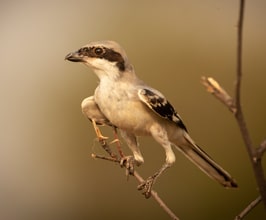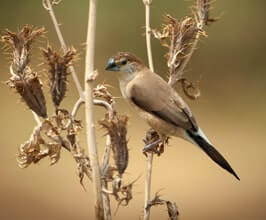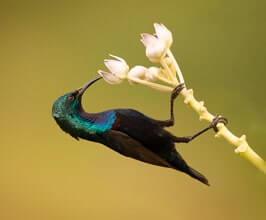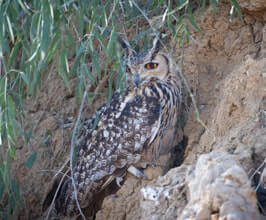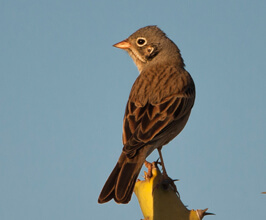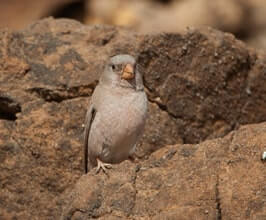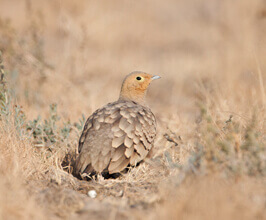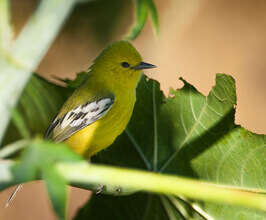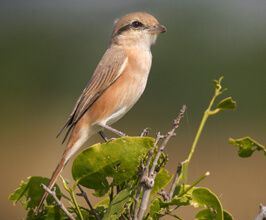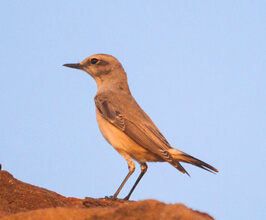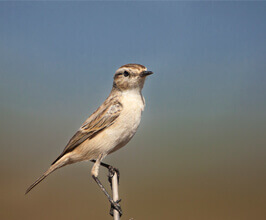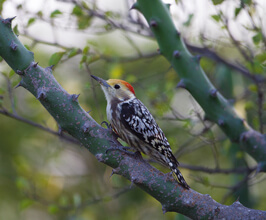Ahmedabad - Velavadar - Gir National Park - Jamnagar - Great Rann of Kutch - Little Rann of Kutch - Ahmedabad
14 Days / 13 Nights
The speciality of our Gujarat Birding Tour is the diverse bird habitats it covers. Drawing from decades of birding experience in this westernmost state of India, we pick out the choicest of Gujarat birding
Booked as per
request.
Included except arrival and departure city.

Private guide for complete tour.
Airport to Airport.
2-8PAX
Included
The speciality of our Gujarat Birding Tour is the diverse bird habitats it covers. Drawing from decades of birding experience in this westernmost state of India, we pick out the choicest of Gujarat birding hotspots to ensure maximum sightings during your India birding holiday.
Our Gujarat birding itinerary takes you to national parks, bird sanctuaries, and marshy flatlands that are either home or wintering grounds of more than 600 species of resident and migratory birds. The national parks, particularly, add a touch of thrill to the Gujarat birding trip on account of the immense wildlife you get to see.
The first one in the order of visit is Velavadar National Park, also called Blackbuck National Park after the antelope whose conservation it supports. The park affords excellent sightings of birds of prey, such as Montagu’s and Pallid Harriers, Black-winged Kite, Shikra, and Short-toed Snake Eagle. The grassland and scrubland of the park yield avian beauties like Stoliczka’s Bushchat, Ashy-crowned Sparrow-Lark, Rufous-tailed and Crested Larks, Desert and Variable Wheatears, and Southern Grey and Rufous-tailed Shrikes. The Alang river, which borders the park, is the haunt of Common Crane and several waders. Besides these birds, the park is home to a fascinating wildlife, including the predators such as the Indian Grey Wolf and the Golden Jackal and mammals like Blackbuck, Bengal Fox, Indian Hare, Indian Desert Gerbil, Jungle Cat, and Nilgai.
Likewise, Asiatic Lion is a big draw at Gir National Park in south Gujarat. The park, being located in Kathiawar-Gir forest ecoregion, hosts around 350 bird species. A day of birding here reveals birds of prey, vultures, owls, nightjars, ducks, kingfishers, herons, egrets, storks, minivets, flycatchers, and many more.
Moving north towards the Gulf of Kutch, we enter a very different geographical region. Khijadiya Bird Sanctuary here abounds with aquatic birds in its freshwater lakes and saltwater marshlands. At places, the two water bodies are found side by side and this unique feature makes the sanctuary a thriving habitat of birds like Great Crested Grebe, Red-naped Ibis, Black-necked Stork, Black-winged Stilt, Crab-plover, Eurasian Oystercatcher, Ruddy Turnstone, Broad-billed Sandpiper, Brahminy Kite, Common Crane, Grey- headed Swamphen, Greylag Geese, Flamingos, Dalmatian Pelicans, and many species of duck. Alongside spotting these birds, one may catch sight of wild animals such as the Golden Jackal, Nilgai, Jungle Cat and Indian Hare.
Saving the best for last, we take you to the Great Rann of Kutch and Little Rann Of Kutch for a busy week of birding. The Rann Of Kutch is located in the Thar Desert of northern Gujarat. Its saltwater marshes, flooded grasslands and hard, cracked mudflats may take a birder by surprise at first. But the more you explore the vast expanse of this region, the more you recognize it as a top-class birding site.
The Rann is the stomping ground of dryland birds such as Grey Hypocolius, Marshall’s Iora, sandgrouse, larks, coursers, plovers, chats, warblers, babblers, and shrikes. The endangered Macqueen’s Bustard is a prized sight among the winter visitors. Birds of prey like eagles, falcons, buzzards, and harriers are common in salty desert stretches, while aquatic birds like Common Cranes, Greylag Geese and several waterfowl can be seen making a splash in the lakes and marshes.
Our Birding Tour of Gujarat spans two weeks to let you explore all these incredible bird habitats thoroughly and at an easy pace. The trip packs in multiple wildlife safaris and several daylong excursions of birding in Gujarat. Not least of all, we provide you with the best birding guidance and advice you are likely to find anywhere in India.
Lodging: Whether you are comfortably off or traveling on a budget, we have a wide range of accommodations for you to choose from. We have singled out luxury resorts, hotels and camps at the locations where they are available, and we also give you the choice of budget lodges. Some birding locations are far off from urban centres and have limited options in terms of lodging, but rest assured you’ll be provided, at all times, comfortable accommodation with all the basic amenities. If you want a customized birding tour of Gujarat and wish for a particular kind of accommodation, do write to us with the details and we will arrange the lodgings that best meet your expectation.
Meals: For the most part of our Gujarat birding adventure, we get to dine and overnight at resorts and hotels that have been selected for their proximity to birding sites, their quality service, and the variety of meals, both Indian and Western, on their menu. Whether you are a vegetarian or a meat lover, we take care of your eating preferences. However, some birding locations on the tour take us far from urban areas where the meal choices may be limited. At times, even our own kitchen staff may take charge and cook some mouth-watering delicacies for you. Best hygiene practices are observed at all times.
Tour Difficulty: Birding generally doesn’t demand the physical rigours of many adventure sports, but a birder has to be fit and healthy to carry out long excursions into the birding sites of Gujarat. Our itinerary includes several days of birding from morning to evening. You should be able to put in the required legwork, with breaks in between, of course. Some days, we travel long hours in cabs (sometimes even other modes of transportation) to move from one birding location to another. The terrain at the birding hotspots in Gujarat is mostly flat and doesn’t demand the toil of mountain climbing. Still, we expect the birders to have the fitness to walk long distances while carrying their personal birding equipment, such as binoculars, camera, and field guide.
Tour Extension: More often than not, we have had birders requesting tour extension to include some popular tourist hotspots of India to add a holiday zing to their birding vacation. We are totally game for such requests, provided they are made well in advance, so that we can plan and execute them to your satisfaction. The Gujarat birding tour extensions generally include a trip to the Taj Mahal (Agra) or a visit to the exotic Rajasthani cities of Udaipur or Jaipur. For wildlife lovers, we have tiger safaris at Ranthambore National Park (Rajasthan) or Corbett National Park (Uttarakhand) to offer. The duration of each of these trips usually doesn’t extend a day, but exceptions can be made on special request.
Climate: Gujarat lies on the Tropic of Cancer. Understandably, the summer here is quite hot and humid. The winter is pleasant and there are places like the Rann Of Kutch where night temperatures can plummet very low. Winter is the best time to do our Gujarat birding tour – not just because of the weather, but also because one stands a good chance to see a lot of migratory birds flying in from the colder regions of the north. This peak season lasts from November to February. You don’t need heavy woollens for Gujarat’s winters. Bring in clothes appropriate for dry warm days and mildly cold evenings and mornings.
You arrive at Ahmedabad in Gujarat by flight or train. Our driver or tour guide meets you at the airport or station and drives you 140 km to Velavadar, location of Blackbuck National Park. The drive doesn’t take more than 3hrs, and upon arrival we check into a pre-booked resort. You spend the evening lounging around at the resort or taking a stroll to get acquainted with the surroundings. Ideally, it is best to conserve your energy and check your enthusiasm until the following morning. We overnight at the resort.
Velavadar National Park used to be the hunting ground of the maharajas, but today it is dedicated to the conservation of the Blackbuck. Spread over an area of 34 square kilometre, the park abounds with grasslands and shrubs where plenty of birds can be sighted.
The target birds of our daylong birding at Velavadar include Western Marsh Harrier, Rufous-tailed Lark, Greater Short-toed Lark, Ashy-crowned and Black-crowned Sparrow Lark, Indian Nightjar ,Indian Bushlark, Singing Bushlark, Crested Lark, Painted and Grey Francolin, Hen Harrier, Desert and Variable Wheatear, Pallid Harrier, Chestnut Bellied Sandgrouse, Spotted Sandgrouse, Painted Sandgrouse, Quails and Saras Crane, Laggar Falcon, Eurasian Hobby, Kestrel, Indian Courser, Red-necked Falcon, Peregrine Falcon, Montagu's Harrier, Eurasian Imperial Eagle, Tawny Eagle, and Short-toed Eagle.
After breakfast at the resort, we leave Velavadar and drive 220 km southwards to Gir National Park, which is the only natural habitat of Asiatic Lions in the world. The drive usually takes 5 hrs and we arrive and check into the resort by afternoon. We take a short rest break and then go out on an afternoon safari at Gir National Park.
Often called the ‘jewel’ of Gujarat’s ecological environment, this national park boasts incredible biodiversity. As many as seven perennial rivers flow through the Gir region and the dry deciduous forests here support many species of flora and fauna. 300 bird species have been observed at Gir National Park, and the afternoon safari reveals a wide range of wildlife, including the Asiatic Lion, Striped Hyena, Indian Leopard, Golden Jackal, Jungle Cat, and many herbivores like nilgai, chital, sambar, chinkara, wild boar, etc. Gir National Park is a success story for the conservation of Asiatic Lions, which numbered just a dozen at the end of the 19th century, but increased to 523 in the census done in 2015. The safari winds through the spots that are most likely to yield good views of these majestic predators, sometimes even seen in groups. We return to the resort in the evening for dinner and overnight.
The number of bird species at Gir National Park are enough to keep you busy for a whole day. To make the most of our time, we go on two safaris in the national park. The aim is to tick off as many birds in the checklist as we can.
The target birds will be Grey Frankolin, Indian Peafowl, Shikra, Small minivet, White browed fantail, Great Tit, Grey Breasted Prinia, Oriental White-eye, Oriental Magpie Robin, Indian Robin, Chestnut-shouldered Petronia , Indian Roller, Pied Kingfisher, Common Kingfisher, Lesser Golden Back & Golden Oriole, Ashy Prinia, Common Tailor Bird , Clamorous Reed Warbler, Blyth’s Reed Warblar, Greenish Warblar, Tawny Bellied Babbler, common babbler, Red-Naped Ibis, Rose Ringed Parakeet, Crested Tree Swift, Green Bee Eater, Coppersmith Barbet, Rufous Treepie, Dusky Crag Martin, Indian Black Bird, Tickell’s Blue flycatcher, Purple Sunbird, and Indian Silverbill. After a busy day of birding at Gir National Park we return to our resort for dinner and well-earned rest.
We leave Gir National Park for Jamnagar right after breakfast. It’s a five-hour drive covering 230 km to the western coast of Gujarat. We arrive in the afternoon and check into a resort. After a short break, we step out for a session of evening birding in and around Jamnagar.
The target birds at Jamnagar are Lesser and Greater Flamingos, Dalmatian Pelicans, Greylag Geese, Demoiselle Cranes, Common Cranes, Great Crested Grebe, Crab Plovers, Eurasian Oystercatchers, Ruddy Turnstones, Common Redshank, Black tailed Godwits, Common Greenshank, Bar tailed Godwit, Pallas’s Gull, Heuglin’s gulls, Little Tern, Caspian Tern, Slender billed, Brown headed and Black headed Gull , Northern Shoveller, Gadwall, Gargeney, Northern Pintail, Eurasian Wigeon, Tufted Pochard, Common Pochard, Lesser Whistling Ducks , Spotbilled Ducks, Comb Ducks, Cotton Pygmy Duck, Black necked Grebes and Crested Grebes, among many others.
The Jamnagar district has two important bird habitats: Khijadiya Bird Sanctuary and Marine National Park. Located just 10 km away from the city of Jamnagar, Khijadiya Bird Sanctuary has freshwater and saltwater lakes, mudflats, creeks, and mangrove scrubs that attract a lot of local and migratory birds. Around 300 different species of birds have been observed at Khijadiya during the winter season. Marine National Park is located in the Gulf of Kutch and abounds with marine life. It also throws up some interesting bird sightings.
A daylong birding at these two hotspots is usually very rewarding. In the evening, we return to our resort for dinner and overnight.
We have an early breakfast at the hotel and then pack up and leave for the Great Rann Of Kutch 350 km to the north. It’s a long drive and takes up to 8 hours. We lunch on the way and check into a resort in the evening for dinner and overnight stay.
The Great Rann Of Kutch is a thriving bird habitat, and a very unusual one at that. Spanning an area of 7500 square km, it is one of the largest salt deserts in the world. Every year, summer monsoon creates lakes in the muddy flatland. On the southern edge of the desert is Banni Grassland, a biodiversity hotspot with a good variety of avifauna. The mainland has arid plains, dry riverbeds and a few hillocks. Every winter season, these areas teem with thousands of birds, so much so that we need three full days of birding here to fully tap into its potential.
The birds to go after are: Great Indian Bustard, Indian Courser, Chestnut-bellied Sandgrouse, Syke's Lark, Long-billed Pipit, Stolickza's Bushchat, Black and Grey Francolin, Tawny Eagle and Bonnelli’s Eagle, Greater Spotted Eagle, Imperial Eagle, Steppe Eagle, White-backed and Long-billed Vulture, White-naped Tit, Desert Warbler, Common Crane, Demoiselle Crane, White-naped Tit, Marshall's Iora, Montagu's & Hen Harriers, Crab Plovers, Oystercatchers, Bluethroat, Rufous-fronted Prinia, Isabeline Shrike, Red-necked Phalarope, Isabelline & Variable Wheatear, Hoopoe Lark, Rosy & Dalmatian Pelicans, Eurasian Eagle Owl, Short-eared Owl, Black Francolin, Steppe Eagle, Imperial Eagle, Tawny Eagle, Laggar Falcon, Eurasian Hobby, Long-legged Buzzard, Desert Warbler, Rufous-tailed Scrub Robin, Flamingos, Collared Pratincole, Eurasian Wigeon, Common Pochard, Tufted Duck, Great-crested Grebe, Quails, Rufous-fronted Prinia, Orphean warbler, Grey-necked, Red-headed and Black-headed Buntings, Chestnut-bellied and Spotted Sandgrouse, Indian Courser, Grey Hypocolius, European Roller, and Eurasian White Stork, besides many more.
After three busy days of birding, we leave the Great Rann of Kutch for the Little Rann Of Kutch to the east. It’s a long drive that takes up most of the day. We lunch mid-way and arrive at the resort around early evening. If you wish, you may do a little birding around the resort, or you may simply lounge around and relax. We dine and overnight at the resort.
The Little Rann Of Kutch is closer to the Gulf of Kutch, and this makes it somewhat different from the Great Rann Of Kutch to the north. Proximity to the sea leads to periodic flooding of low-lying areas. On top of it, monsoon rains create marshy conditions and scrubby vegetation that attract a lot of wildlife. From birding point of view, the Little Rann Of Kutch is ideally located at the crossroads of bird migration and it teems with large numbers of avian wonders every winter. You may see huge flocks of several aquatic birds here, besides the Indian Wild Ass.
About 200 species of birds may be spotted at the Little Rann Of Kutch. The target species are: Short-eared Owl, Montagu’s & Pallid Harriers, Dalmatian & Great White Pelicans, Greater & Lesser Flamingos, Greater Spotted, Steppe & Eastern Imperial Eagles, White-rumped Vultures, Common Cranes, Pied Avocets, Northern Shovelers, Eurasian Wigeons, Marsh Harriers, Macqueen’s Bustard, Greater Short-toed Larks, Lesser Whitethroat, Common Chiffchaff and Blyth’s Reed Warbler, Pale Sand Martins, Red-rumped & Wire-tailed Swallows, Chestnut-bellied Sandgrouse, Greater Hoopoe Lark, Sykes's nightjar, Pallid Scops Owl, Spotted Sandgrouse, Red-necked Phalarope, Cream-colored Courser, Sociable Lapwing, and Collared Pratincole.
We check out from the resort in the morning and drive you 160km to Ahmedabad. The trip takes up to 4-5 hours. We transfer you to the airport for your onward journey. The Gujarat birding expedition ends with happy memories of plentiful sightings.
